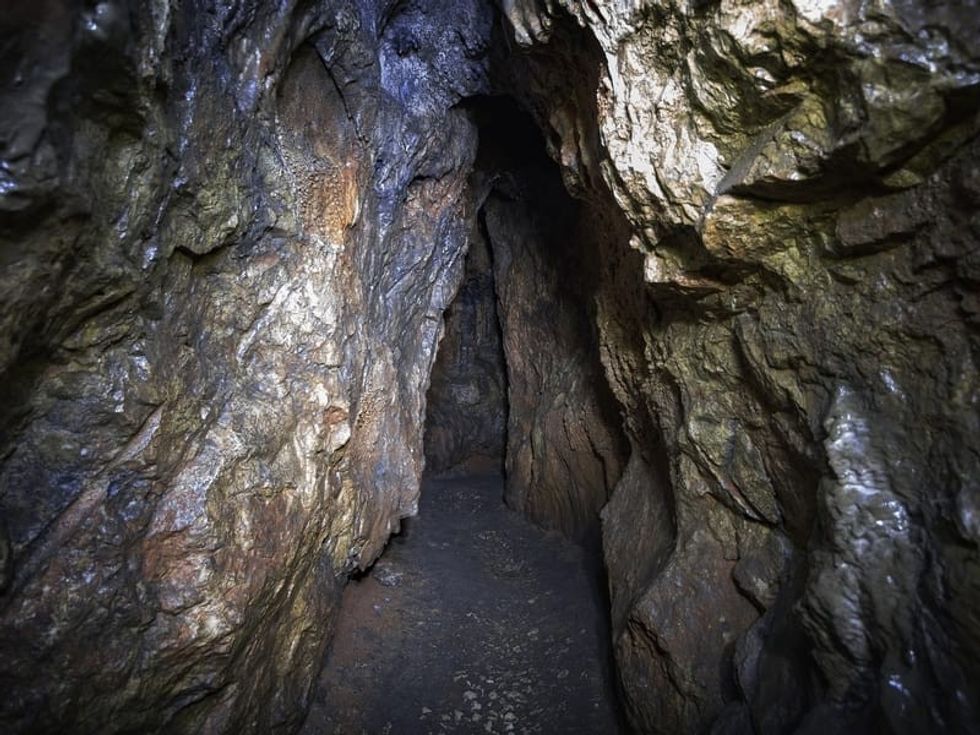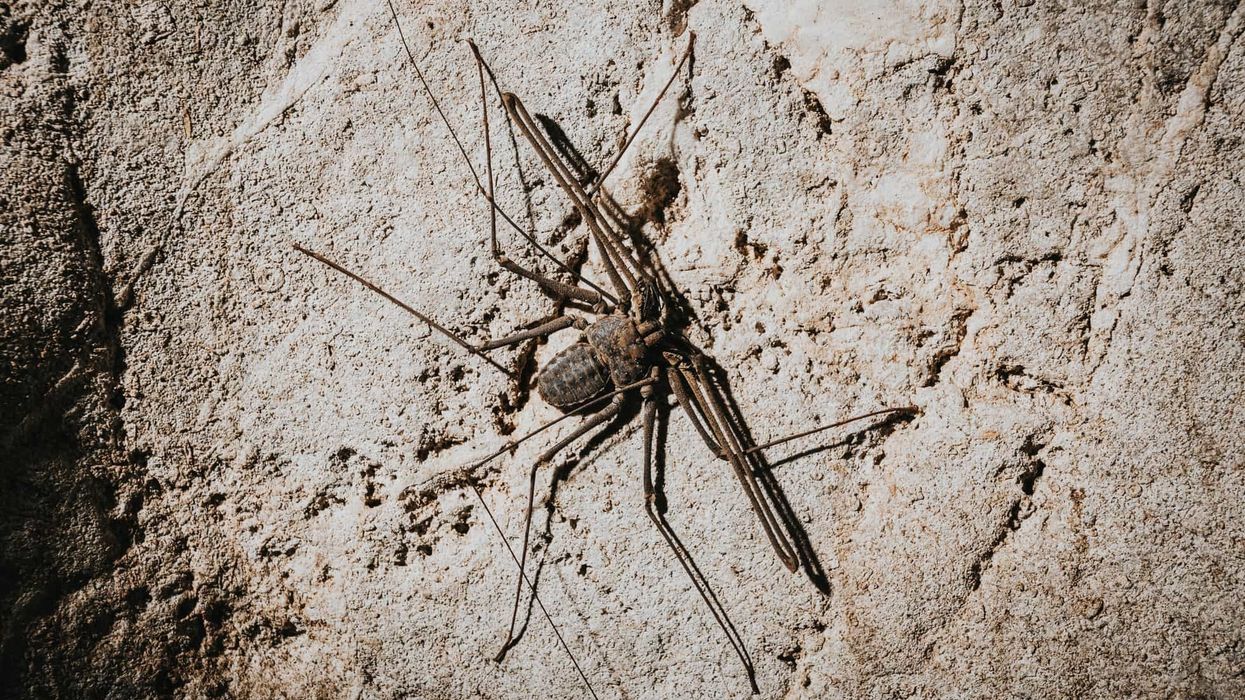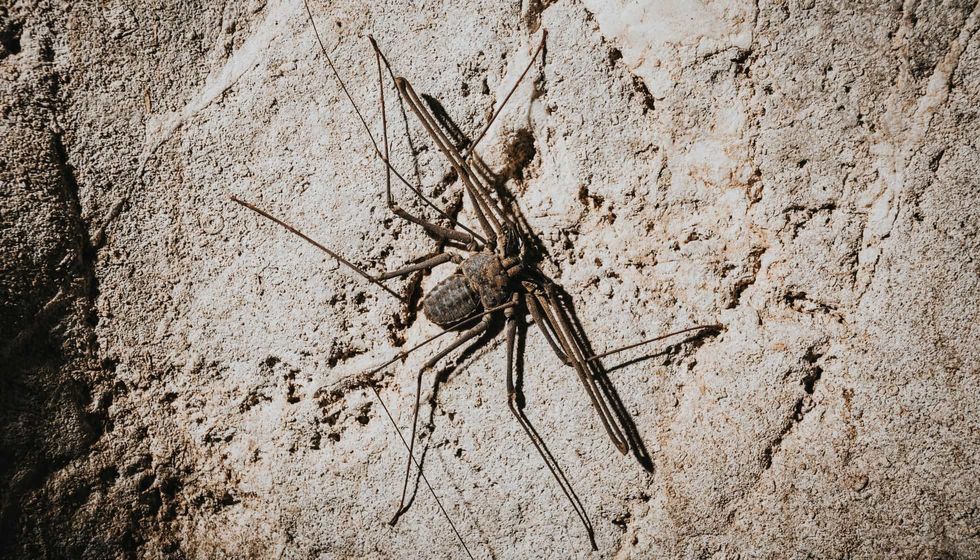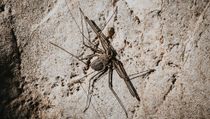Fun Tailless Whip Scorpion Facts For Kids

Whip spiders and tailless whip scorpions fall under the ancient order of Amblypygi. These creatures are known by the name Amblypygids and have five families, 17 genera, and around 155 species had been discovered and described till now.
Among these Amblypygids, Damon variegatus and Damon diadema are most commonly found. Although the species belong to the class of Arachnida, the tailless whip scorpions are neither a spider nor a scorpion.
Amblypygids are also known by the names of cave spiders and tailless whip scorpions.
They look a lot like spiders and have quite a frightening and bizarre look. The name tailless whip scorpions are given to this species because of their whip-like front legs among the total of eight legs.
Tailless whip scorpions should not be confused with vinegaroons or whip scorpions, which fall under the order Thelyphonida related to the order of Amblypygi. The whip spiders are found in tropical and subtropical regions worldwide and are one of the Arachnids that exhibit social behavior.
These species seem quite dangerous and poisonous but actually are harmless to humans. Amblypygids possess no glands or fangs for silk or carrying venom.
The whips, also called the antenniform legs are sometimes two and a half times the length of the species' other legs.
These whips or the first pair of legs are used as sensory organs in the dark. If you enjoyed reading about the tailless whip scorpions, check out bark scorpion facts and the deathstalker scorpion facts.
Tailless Whip Scorpion Interesting Facts
What type of animal is a tailless whip scorpion?
Tailless whip scorpions are a part of the order Amblypygi and have around 150 species related to them.
What class of animal does a tailless whip scorpion belong to?
These species called whip spiders and tailless whip scorpions, fall under the class of Arachnida in the Animalia kingdom. These are among the few examples of arachnids.
How many tailless whip scorpions are there in the world?
The exact population of this species is unknown. But there is no threat to their numbers and the tailless whip scorpions are found all over the world commonly.
Where does a tailless whip scorpion live?
Damon variegatus, also known as the Tanzanian whip scorpion, African whip spider, or giant tailless whip scorpion, is usually found in Kenya, South Africa, Namibia, and Tanzania. They are found throughout Africa. Tanzania and Kenya are their main habitat.
Damon diadema is a tailless whip scorpion, also known as the giant amblypygid, found in Central Africa.
The family of the Amblypygids is also found in the tropical parts of North and South America and Asia.
What is a tailless whip scorpion's habitat?
The tailless whip scorpions live in temperate and tropical scrub forests. They are found to live in caves, crevices, and under large boulders in elevated areas. The species love to live in humid tropical and subtropical regions. By day, they mostly show social behavior by hiding under leaves and debris.
Some species are found in caves and some in houses. Due to the species being nocturnal, they are not usually encountered by humans and are harmless to humans. They usually hunt and feed during the night.
Rainforests, savannahs, and semi-deserts are also likely habitats of these species. They are found in and regions having lots of caves and humid areas.
Who do tailless whip scorpions live with?
Tailless whip scorpions are usually a solitary species, but they are found in groups in close areas like caves. They hunt around each other and do not engage in territorial disputes like other creatures.
The emperor scorpion is the opposite and is very territorial in nature. They engage in fights that usually lead to the death of one of the parties.
How long does a tailless whip scorpion live?
They usually live for up to 10 years.
How do they reproduce?
The mating season is during the rainy season. Courtship starts with the male depositing stalked spermatophores.
These have one or more sperm masses at the tip, onto the ground. The males guide the female with trembling movements of his long front legs using his pedipalps to the sperm packet he has deposited. The female gathers the sperm and lays fertilized into a sac attached to the underside of her abdomen.
The number of eggs is up to 60 and are stuck on the mother's sac until they hatch. The young are usually white in color.
After the young hatch, they climb up onto the mother's back until their second molt. Any first molt falling off the mother's back does not survive. The mothers remain motionless during this period of one to two weeks.
The young species disperse into the forest after the second molting. These species need two years to reach maturity.
What is their conservation status?
These species are not considered to be threatened and are not protected. They are found all over the world and are very common. They are considered of Least Concern by the IUCN Red List.
Tailless Whip Scorpion Fun Facts
What do tailless whip scorpions look like?

Tailless whip scorpions have a broad and highly flattened body. They have a solid carapace and a segmented abdomen. Most of the species have eight eyes.
They possess a pair of median eyes at the front of the carapace. The median eyes are located just above the chelicerae similar to crustaceans. Three smaller eyes are present further back on each side.
The second pair of legs or the pedipalps serve as sensors. These pedipalps are modified and inward adapted for grabbing and retaining prey, much like the praying mantis. The first pair of legs too act as sensory organs, and the other six legs are used for walking.
Vinegaroons, often mistaken as tailless whip scorpions, are different as they have a whip-like tail attached to their bodies. These sensory legs are very thin. They also possess numerous sensory receptors and can extend several times the length of the body of the species. They usually walk sideways with one whip pointing towards the direction of travel.
The name Amblypygid means blunt tail, which is common with the whip spiders. Unlike the whip scorpions, which are often mistaken to be the tailless whip scorpions, they do not possess a tail.
How cute are they?
They are quite dangerous-looking creatures but are actually not dangerous at all to us humans. However, they are not particularly cute!
How do they communicate?
For social behavior, research conducted at Cornell University shows that the mother Amblypygids communicate with the young with the antenniform legs and the young reciprocate the same way. This is the way the whole species usually communicate.
How big is a tailless whip scorpion?
The whip spider length of the body usually differs from species to species. The body length of Damon variegatus ranges from 0.3-1.8 in (0.76-4.57 cm).
Amblypygids range from 4-10 in (10.16-25.4 cm), including their legspan. Their bodies are broad.
Tarantula marginemaculata of Florida measures 0.4 in (1.01 cm) of body length and are often found inside homes in the region.
The sun spiders or the wind scorpions which are similar to the tailless whip scorpions grow a maximum up to 5-6 in (12.7-15.24 cm)
How fast can a tailless whip scorpion move?
The speed of the tailless whip scorpion is not known, although they are known to be quick in transitions and are quite fast if threatened. Females are stationary right after the birth of the young and do not move at all.
The tailless whip scorpions are very fast and agile. They trust their speed and camouflage capabilities to elude predators. The flattened body also helps them to hide in narrow places under rocks and tree barks and can survive for days without water and food.
How much does a tailless whip scorpion weigh?
They are extremely lightweight, with a weight ranging from 0.008-0.03 oz (0.25-1 g) in most cases. This low weight gives the species the ability to run faster.
What are the male and female names of the species?
The male and female sexes of the species are not given different names. They are known commonly by their genus and scientific names.
What would you call a baby tailless whip scorpion?
A baby tailless whip scorpion is called a young or hatchling.
What do they eat?
The tailless whip scorpions feed naturally on crickets, locusts, termites, worms, and small vertebrates. They usually feed on prey that is similarly sized to their abdomens.
They feed on live insects like crickets and cockroaches.
Phrynus longipes are a Caribbean species known to eat large flies.
Once a week feeding is enough for these Amblypygids and they should not be fed before, during, and after molting.
Are they poisonous?
These scary-looking species are often mistaken to be dangerous but are actually non-venomous.
They are known to rarely bite if threatened but can grab fingers using their pedipalps resulting in thorn-like puncture injury, which is harmless to humans.
Would they make a good pet?
Many species of the Amblypygids are known to be kept as pets. They are quite hardy, so are easy as pets.
They need tall glass enclosures with vertical space for climbing and molting and a good humid temperature. The substrate on the floor should be moist, and enough water should be provided every couple of days. Humidity inside the enclosure is the most important requirement as it can kill a tailless whip scorpion faster than a lack of food.
Did you know...
The tailless whip scorpions are non-poisonous and cannot hurt anyone fatally. But if threatened, they are known to bite and puncture the body with their pinchers.
The body is flattened with a solid carapace. They are known to walk sideways with six legs, and the long front legs detect vibrations to avoid obstacles and find prey.
The tailless whip scorpions resemble both scorpions and spiders, but are neither of them.
A tailless whip scorpion made its debut in the feature film, 'Harry Potter And The Goblet Of Fire'.
What states are tailless whip scorpions in?
The tailless whip scorpions are found in Arizona. They are endemic to the region. North and South American continents are the most habitable places for the species and found extensively as pets or in the wild.
Are tailless whip scorpions blind?
Tailless whip scorpions are mostly blind and nocturnal. They use their sensory legs and other receptor organs to scan the environment. They have eight eyes with a pair of median eyes at the front of the carapace.
Here at Kidadl, we have carefully created lots of interesting family-friendly animal facts for everyone to discover! Learn more about some other arthropods from our ten-lined June beetle facts and gumboot chiton facts for kids pages.
You can even occupy yourself at home by coloring on one of our free printable tailless whip scorpion coloring pages.
We Want Your Photos!
More for You
Bachelor of Arts specializing in English

Ritwik BhuyanBachelor of Arts specializing in English
A skilled content writer, Ritwik holds a Bachelor's degree in English from Delhi University. He has refined his writing abilities through his past experience at PenVelope and his current role at Kidadl. In addition to his proficiency in writing, Ritwik has pursued his passion for flying by achieving CPL training and becoming a licensed commercial pilot. This diverse skill set highlights his commitment to exploring multiple fields. Ritwik's experience in the aviation industry has provided him with a unique perspective and attention to detail, which he brings to his writing.
Bachelor of Arts specializing in English Literature, Masters of Art specializing in English and Communication Skills

Sonali RawatBachelor of Arts specializing in English Literature, Masters of Art specializing in English and Communication Skills
Sonali has a Bachelor's degree in English literature from Guru Gobind Singh Indraprastha University and is currently pursuing a Master's in English and Communication from Christ University. With considerable experience in writing about lifestyle topics, including travel and health, she has a passion for Japanese culture, especially fashion, and anime, and has written on the subject before. Sonali has event managed a creative-writing festival and coordinated a student magazine at her university. Her favorite authors are Toni Morrison and Anita Desai.
Disclaimer
1) Kidadl is independent and to make our service free to you the reader we are supported by advertising. We hope you love our recommendations for products and services! What we suggest is selected independently by the Kidadl team. If you purchase using the Buy Now button we may earn a small commission. This does not influence our choices. Prices are correct and items are available at the time the article was published but we cannot guarantee that on the time of reading. Please note that Kidadl is a participant in the Amazon Services LLC Associates Program, an affiliate advertising program designed to provide a means for sites to earn advertising fees by advertising and linking to Amazon. We also link to other websites, but are not responsible for their content.
2) At Kidadl, we strive to recommend the very best activities and events. We will always aim to give you accurate information at the date of publication - however, information does change, so it’s important you do your own research, double-check and make the decision that is right for your family. We recognise that not all activities and ideas are appropriate for all children and families or in all circumstances. Our recommended activities are based on age but these are a guide. We recommend that these ideas are used as inspiration, that ideas are undertaken with appropriate adult supervision, and that each adult uses their own discretion and knowledge of their children to consider the safety and suitability. Kidadl cannot accept liability for the execution of these ideas, and parental supervision is advised at all times, as safety is paramount. Anyone using the information provided by Kidadl does so at their own risk and we can not accept liability if things go wrong.
3) Because we are an educational resource, we have quotes and facts about a range of historical and modern figures. We do not endorse the actions of or rhetoric of all the people included in these collections, but we think they are important for growing minds to learn about under the guidance of parents or guardians.







